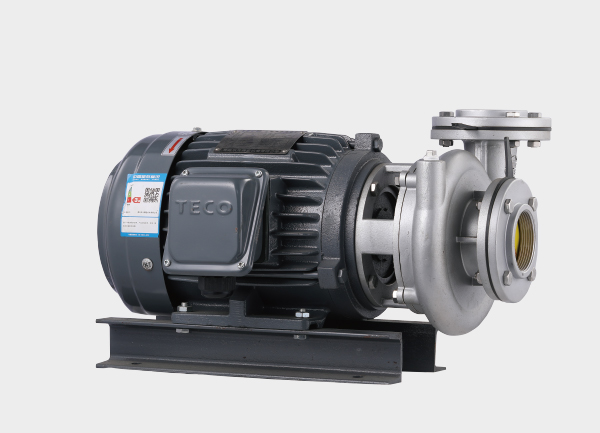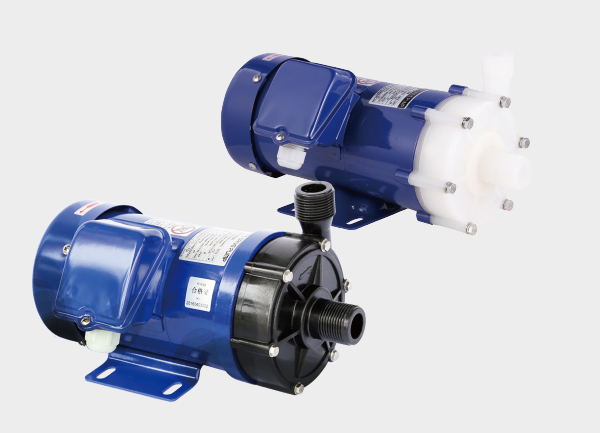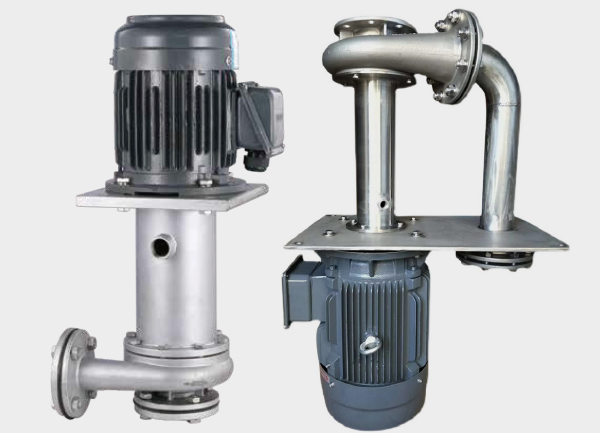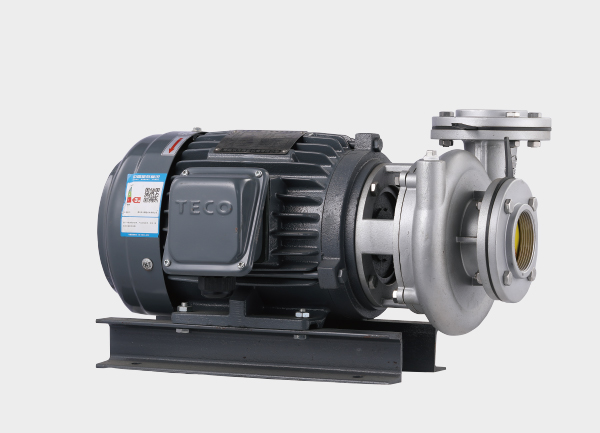1. What Is a Self-Priming Pump?
A self-priming pump is a type of pump that can automatically remove air from the suction line and start pumping liquid without manual priming or external vacuum assistance. Unlike conventional centrifugal pumps, self-priming pumps do not require filling with liquid before each start.
This feature makes them ideal for applications where the pump is installed above the liquid level or in systems with long suction pipelines. They are widely used in industrial, agricultural, municipal, chemical, wastewater, and marine systems.
In principle, a self-priming centrifugal pump generates a vacuum through the circulation of the residual liquid inside the casing, drawing in the fluid after expelling air.
Meanwhile, positive displacement pumps—such as gear pumps, diaphragm pumps, and screw pumps—naturally possess self-priming ability and can handle viscous or gas-containing liquids directly.
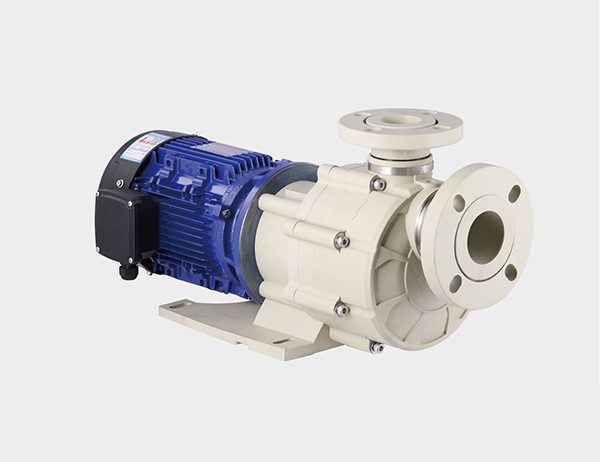
2. How Does a Self-Priming Pump Work?
The working process of a self-priming pump includes two key stages:
the self-priming stage and the normal pumping stage.
Initial Filling:
Before first startup, a certain amount of liquid must be added through the priming port.Air Removal (Self-Priming Stage):
When the impeller rotates, the liquid in the casing circulates and mixes with air. This mixture is pushed outward, creating a vacuum zone at the impeller eye. Air is expelled through the discharge outlet.Vacuum Formation:
As the air is discharged, a vacuum gradually forms in the suction line, allowing liquid to rise into the pump chamber.Normal Operation (Pumping Stage):
Once the casing is filled with liquid, the pump works like a standard centrifugal pump, providing stable, continuous flow.
To ensure reliable re-priming, most designs include a retention chamber or recirculation channel that keeps enough liquid inside after shutdown for the next start.
3. Main Types of Self-Priming Pumps
Self-priming pumps come in various types based on their structure and operating principle:
| Type | Description | Typical Applications |
|---|---|---|
| Centrifugal Self-Priming Pump | The most common type; simple design and broad adaptability. | Clean water, sewage, irrigation |
| Trash Pump / Sewage Pump | Handles solids and sludge efficiently. | Construction, mining, wastewater |
| Jet Self-Priming Pump | Uses the Venturi jet principle to create vacuum. | Domestic water supply, shallow wells |
| Diaphragm Self-Priming Pump | Flexible diaphragm reciprocates to move fluid. | Viscous, corrosive, or solid-laden liquids |
| Rotary Vane Pump | Uses rotating vanes to form suction and discharge. | Fuel transfer, lubrication systems |
| Liquid Ring Pump | Employs a rotating liquid ring to compress gases. | Gas–liquid mixtures, industrial systems |
| Peripheral (Side Channel) Pump | High head, low flow applications. | Boiler feed, laboratory systems |
| Piston Self-Priming Pump | Reciprocating piston for high-pressure delivery. | Firefighting, cleaning equipment |
4. Difference Between Self-Priming and Non-Self-Priming Pumps
| Comparison | Self-Priming Pump | Standard Centrifugal Pump |
|---|---|---|
| Priming Capability | Automatically removes air | Requires manual priming or vacuum |
| Installation Position | Can be above liquid level | Must be below liquid level |
| Handling Air–Liquid Mixtures | Can handle air entrainment briefly | Easily air-locked |
| Maintenance | Motor is dry; easy to service | Often submerged; harder to maintain |
| Efficiency | Slightly lower due to liquid chamber | Higher overall |
| Best Use Cases | Drainage, sewage, portable use | Steady liquid levels |
5. Typical Applications of Self-Priming Pumps
Municipal and Wastewater Management:
Lifting and transferring sewage, rainwater, and sludge.Construction and Dewatering:
Site drainage for basements, tunnels, and foundations.Agriculture and Irrigation:
Drawing water from rivers or tanks for irrigation.Marine and Offshore Systems:
Used as bilge, cooling, or seawater circulation pumps.Firefighting and Emergency Response:
Quick-start pumps for fire trucks and emergency drainage.Chemical and Industrial Fluid Transfer:
Handling corrosive, viscous, or flammable liquids.Mining and Slurry Handling:
Dewatering pits, slurry transport, and sand washing.
6. Nine Key Factors for Selecting a Self-Priming Pump
Solid Particle Size – Affects impeller design and anti-clogging performance.
Fluid Viscosity – Influences speed, flow rate, and feeding method.
Suction Lift and Piping Resistance – Long or complex suction lines reduce efficiency.
Liquid Level Variation – Must consider water level fluctuation and cavitation risk.
Self-Priming Time – Excessive duration may cause overheating.
Drive Type – Electric motor, diesel engine, or hydraulic system.
Coupling Structure – Direct-coupled (compact) or long-coupled (easier maintenance).
Mounting Style – Fixed base, trailer-mounted, or floating platform.
Control System – Auto start/stop, dry-run protection, remote monitoring.
7. Advantages and Disadvantages of Self-Priming Pumps
Advantages:
Automatic air removal and quick start-up.
Flexible installation above liquid level.
Easy maintenance—motor stays dry.
Can handle air–liquid or solid–liquid mixtures.
Ideal for temporary and emergency pumping.
Disadvantages:
Slightly lower efficiency due to internal liquid circulation.
May require re-filling after long downtime.
Improper installation can cause air lock.
Regular cleaning and inspection are necessary.
8. Installation and Maintenance Tips
Always fill the pump casing with enough liquid before first use.
Ensure no air leaks in the suction line; seal all joints and flanges.
Avoid placing check valves directly above the discharge port.
Monitor startup: there should be no abnormal noise, vibration, or cavitation.
Regularly inspect bearings, alignment, and lubrication.
Keep detailed maintenance records to extend service life.
9. Common Problems and Troubleshooting
| Problem | Possible Cause | Solution |
|---|---|---|
| No suction | Air leak, dry pump, valve closed | Check seals and fill liquid |
| Long priming time | High suction lift, long piping | Shorten suction line |
| Pump overheating | Insufficient liquid, prolonged priming | Reduce suction height |
| Low flow rate | Impeller wear or blockage | Clean or replace impeller |
| Noise and vibration | Shaft misalignment or trapped air | Realign, vent air |
10. Conclusion
The core advantage of a self-priming pump is its ability to automatically draw liquid even when installed above the fluid level.
Thanks to its strong adaptability, easy maintenance, and quick-start capability, it has become indispensable in wastewater treatment, flood control, chemical processing, and irrigation systems.
Whether it’s a centrifugal, diaphragm, or rotary vane model, proper selection, installation, and maintenance are essential for long-term efficiency.
As technology evolves, self-priming pumps continue to improve in energy efficiency, wear resistance, anti-clogging, and smart control, powering the next generation of fluid handling systems.



